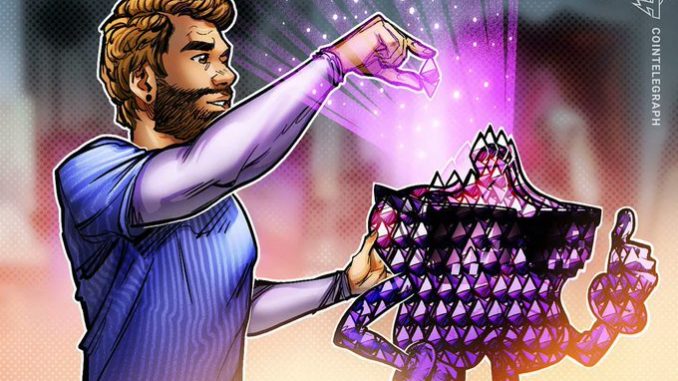
Are NFTs based on Ethereum?
Nonfungible tokens (NFTs) are compatible with any Ethereum-based project. You could, for example, trade a piece of a portrait for a ticket!
Most NFTs are part of the Ethereum blockchain at a high level. Ether (ETH), like Dogecoin (DOGE), is a cryptocurrency, but the Ethereum blockchain also enables these NFTs, which store additional information that allows them to function differently from digital currencies.
Related: What are NFTs, and why are they revolutionizing the art world?
NFTs have incredible potential, and the ERC-721 was created to address the need for unique tokens. Moreover, due to its rarity or age, the ERC-721 standard is distinct and can have a different value than another token from the same smart contract. The Etherscan NFT Tracker ranks the top NFTs on Ethereum by volume of transfers.
But do you need Ethereum to make an NFT? The answer is no. Ethereum is not a prerequisite to creating NFTs. Other blockchains like Solana (SOL), Cardano (ADA), Tezos (XTZ), BNB Chain (BNB) and Tron (TRX) are alternative platforms for minting or creating NFTs.
So, if you want an answer to, “Is ETH the only way to buy NFT?” The answer, again, is no. Each platform requires the transaction fee to be paid in its native token. For instance, 2 ADA (Cardano blockchain’s native token) is the cost for the NFT-MAKER PRO platform, which is paid to the customers’ wallet together with the minted NFT (a requirement from Cardano).
Why are most NFTs on Ethereum?
Ethereum is the leader among other blockchain networks and NFTs were born on the Ethereum blockchain. As a result, NFTs sell for a substantially higher price on average, so creators prefer them over other platforms.
Because of its highly-secure network and data architecture, the Ethereum blockchain leads the decentralized finance (DeFi) market, with the bulk of NFT projects running on it as ERC-721 coins. In addition, the blockchain provides NFTs with extensive exposure to a large and growing market. Moreover, NFT systems should continue to be Ethereum virtual machine compatible so that Ethereum wallets like Metamask can support them.
However, the high volume of network traffic causes a significant transaction backlog, leading to a substantial increase in transaction fees. Rarible, OpenSea and Nifty Gateway are three popular Ethereum-based NFT marketplaces. Nonetheless, because of the Ethereum blockchain’s limitations, NFT creators have turned to other solutions, such as the Solana blockchain, to overcome these difficulties.
Ethereum NFTs vs. Solana NFTs
The consensus process used by Solana and Ethereum is different. Proof-of-work is used by Ethereum, which results in a more decentralized network with less scalability. The ETH 2.0 is designed to address the dreaded scalability issue that has threatened its NFT and DeFi market shares. As a result, the blockchain leader may lose its status unless the 2.0 upgrade is implemented quickly.
In contrast, Solana uses a combination of proof-of-stake and proof-of-history, a less secure but more efficient method that allows for fast and low-cost transactions using its native currency called SOL. However, Ethereum is a mature project with a significant market position, increasing creators’ confidence in minting NFTs on the Ethereum blockchain.
SolSea is Solana’s open NFT marketplace. When minting NFTs, it allows creators to choose and incorporate licenses. That said, collectors know what they’re buying and creators know what they’re selling. Solanart, a prominent NFT marketplace that launched before SolSea, is another popular NFT marketplace on Solana.
